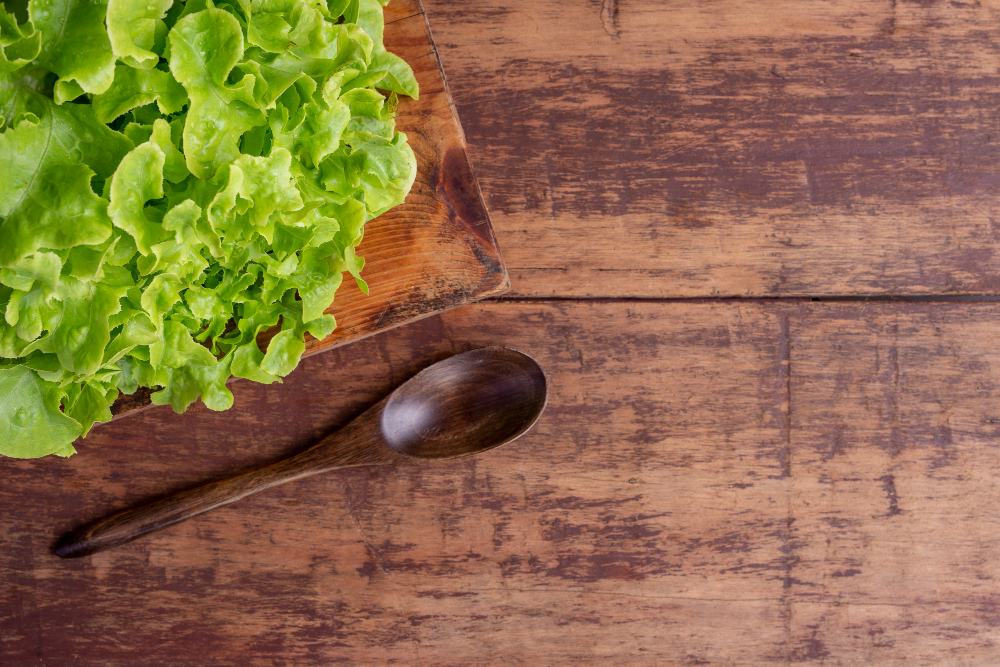In essence, tabbouleh is a parsley salad. Technically, there is no lettuce in it. Parsley, tomatoes, bulgur wheat, and green onions are all finely diced and combined with olive oil and lemon juice to make this salad. The most well-known Mediterranean salad is definitely tabbouleh salad (also known as tabouli salad), and it’s nice that it’s starting to gain popularity in American grocery shops all over the place.
Parsley is the primary ingredient in tabbouleh as it is traditionally prepared in the Middle East; all other ingredients, in terms of amount, are second-tier. It is not a parsley salad with lots of grain; rather, it is a parsley salad with some grain in it. The tendency to use a lot of bulgur (or even couscous) in American cooking deviates from the dish’s original purpose.
When making this salad, to avoid letting extra moisture into the salad, thoroughly wash and dry all the herbs. Your best option for this is a salad spinner. Also, To avoid bruises, hand-cut the parsley and mint with a very sharp knife. While a food processor may seem convenient for the ease it promises, the end result will be a pulpy, battered, and beat-up salad.
In order to prevent the tomatoes from dumping its juices into the salad and making it soupy, I added salt to the diced tomato before letting the liquids collect in a basin below after draining through a strainer (more on that later). Through osmosis, the salt causes the tomato to lose water.
I added salt to the parsley too but in contrast to the tomato, I placed the parsley in a mixing bowl lined with paper towels because the moisture from the herb doesn’t accumulate well enough to drain through a sieve like it does with the tomato.
I then focused on the bulgur, which may be a challenging ingredient. Simply described, it is manufactured from parboiled, dried, and cracked durum wheat, the same type used to make semolina. The fact that it is available in several sizes, from coarse to fine, is the most crucial information. Unlike many other dried grains, bulgur doesn’t require boiling water to be added to it before cooking. What it does require is a hot soak. To do this, I boiled some of my drained tomato water and poured it on the bulgur. I allowed it to rest for approximately an hour for the coarse grind to soften. I drain any excess moisture from the bulgur, like I did with the parsley, to help regulate the liquid level.
Almost everything is finished once the extra water has been squeezed out of the parsley, tomatoes, and bulgur and the tomato water has been used to hydrate the bulgur. Everything needs to be combined together with some mint and chopped scallions (but minced chives, shallots, or onion work as well), then it is seasoned, dressed with olive oil and lemon juice, and served. You can also add some spiceses

Ingredients
- 680g ripe plum tomatoes, finely diced
- 4 teaspoons salt, divided, plus more for seasoning
- 4 cups finely chopped flat-leaf parsley leaves and tender stems, finely chopped with a sharp knife
- ½ cup dry coarse bulgur wheat
- 2 cups finely chopped fresh mint leaves
- 4 scallions, white and light green parts only, finely chopped
- 10 tablespoons extra-virgin olive oil
- 4 tablespoons fresh juice from 1 lemon
- ½ teaspoon ground coriander seeds (optional)
- Pinch ground cinnamon (optional)
- Freshly ground black pepper
- Romaine lettuce leaves, for serving
Directions
- Add 2 teaspoons of salt to the tomatoes and mix. Place in a colander or fine-mesh strainer placed in a basin and let drain for 20 minutes. Keep fluids on hand.
- Add the final teaspoon of salt to the parsley and mix to combine. Place in a sizable mixing bowl that has been lined with paper towels and leave for 20 minutes. Use towels to blot parsley to remove extra moisture.
- In a small heatproof bowl, add 1/2 cup of the reserved tomato water, bring to a boil, and then pour over the bulgur. Let stand for about an hour, or until the bulgur is softened (bulgur may still have a slight bite, but will continue to soften in the salad). With paper towels, dry any remaining liquid from the bulgur.
- Combine tomatoes, parsley, mint, bulgur, scallions, olive oil, lemon juice, powdered coriander seeds, and cinnamon in a sizable mixing dish. Add pepper and salt to taste. Serve romaine leaves along with the tabbouleh.











